The School was founded in 1554. Two leading townsmen of Walsall, George & Nicholas Hawe spent weeks in London and succeeded in bringing before the Privy Council of Queen Mary I their petition to found a school. Many towns at that time were setting up schools to teach reading, writing and the classics.
The Reformation under King Edward VI had led to the abolition of chantries which were chapels within churches where prayers were said for the souls of the dead. Funds from the chantries were taken by the Crown and sometimes used for charitable purposes. The Letters Patent founding the School allowed rents from fields around Walsall – amounting to £10 per annum to be used to maintain the new school. This was housed in on old town guild hall near St Matthew’s Church. Thus QM was, in this way, a Protestant School founded in a Catholic reign. The School in the 1550s probably accommodated 60 boys taught by a Headmaster and his assistant or usher.
The first known Headmaster, Master Petypher, presented his copy of Virgil’s Aeneid to the School “the use whereof he willeth the schoolmaster for the time being always to have”. This is still our oldest possession. Amongst famous 17th century pupils can be numbered John Somers “sometime Lord Chancellor of the realm” and John Hough, Bishop successively of oxford, Lichfield and Worcester. The coats of arms of these two Old Marians are to be found in the School Hall.
The School declined in the 18th century, as did many local grammar schools. The curriculum was becoming outdated. However, in 1797 the governors obtained an Act of Parliament to divide the School on to a grammar school and a commercial school. The grammar school moved to Park Street where it expanded.
In 1850 the governors built a new school in Lichfield Street on land purchased from Lord Hatherton. At this time, all Headmasters were priests of St Paul’s Church. The last in Holy Orders was the Rev Alexander Irvine (whose portrait hangs outside the old board room).
In 1893 the first physics and chemistry laboratories were built and in May 1900 a cadet corps was founded as a cadet company of the South Staffordshire regiment. This became a unit of the Officers’ Training Corps and subsequently the Combined Cadet Force.
In 1906 Edward Norman Marshall became Headmaster and was one of the great Heads of the 20th century. He created the sixth form, the first House system and the Queen Mary’s Club to keep old boys in touch with the School. In 1913 nine and a half acres of land was purchased at Mayfield. The First World War had a traumatic effect on the School. A vast number of Old Boys from a relatively small school died in the war.
In the 1930s the School prospered, but with the depression plans to rebuild the Victorian buildings were shelved. Rugby football was introduced. A cricket pavilion – which still stands – was built in 1930. In those days the first two years were educated in a separate building known as Moss Close – a building at the end of Mellish Road. The name is still used in School today.
The Second World War had a serious impact on the life of the School. Lessons on Saturday mornings were abandoned and some of the younger masters were called up and replaced in many cases by ladies on the staff. Incendiary bombs fell in the school yard and the playing fields were dug up for growing crops.
In 1944 QM became a Voluntary Aided grammar school and entry was regulated by the new 11 plus examination. In the 50s the school expanded and the Sixth form grew. In 1961 the new building at Mayfield commenced under the Headship of S.L.Darby and it was opened by the Dean of Westminster in 1966.
Under Mr Darby’s Headship the QMA (the Parents’ Association) was created and the School continued to expand. The Welsh Centre at Farchynys was purchased in 1963. However, political problems faced the School in the 1970s and plans were drawn up to create a comprehensive school on the Mayfield site which were only abandoned after the election of the Conservative Government of 1979.
Under the Headships of Mr K.G.Howard (1979 – 1995) and Mr S.G.Holtam (1995 – 2008), the academic standards of the School continued to rise and QM was regularly placed near the top of the grammar school national league tables. Extra-curricular activities, games, societies, CCF, music and drama have flourished. A new sports hall and a Languages Block were added and the School took on Languages status and recently Business and Enterprise Status.
Under the Headship of Mr TJ Swain (2008 – 2017), there were a number of significant changes to the school site: a state-of-the-art Food Technology room; a multi-purpose Sports Area, fitness suite and improvement in changing facilities; a humanities wing and new music facility. However, the flagship development has been under the auspices of the Gift of Learning Campaign which funded a new Sixth Form and Community Learning Centre: a flagship building which is transforming the appearance of the School, from Sutton Road. Academy Status brought new freedoms and responsibilities; the School has embraced those without losing sight of its foundational aims.
In January 2018, the School became a founder member of the Mercian multi-academy trust. Mr Swain stood down as Headmaster in order to take over as the CEO of the trust, handing over the reins to Mr RJ Langton (Head 2018-present).
The trust will inevitably see greater co-operation between the schools, but we maintain our autonomy and are committed to our pillars. We remain academic in purpose, international in outlook, enterprising in spirit and generous in approach. We face the challenges of the twenty-first century with confidence.

